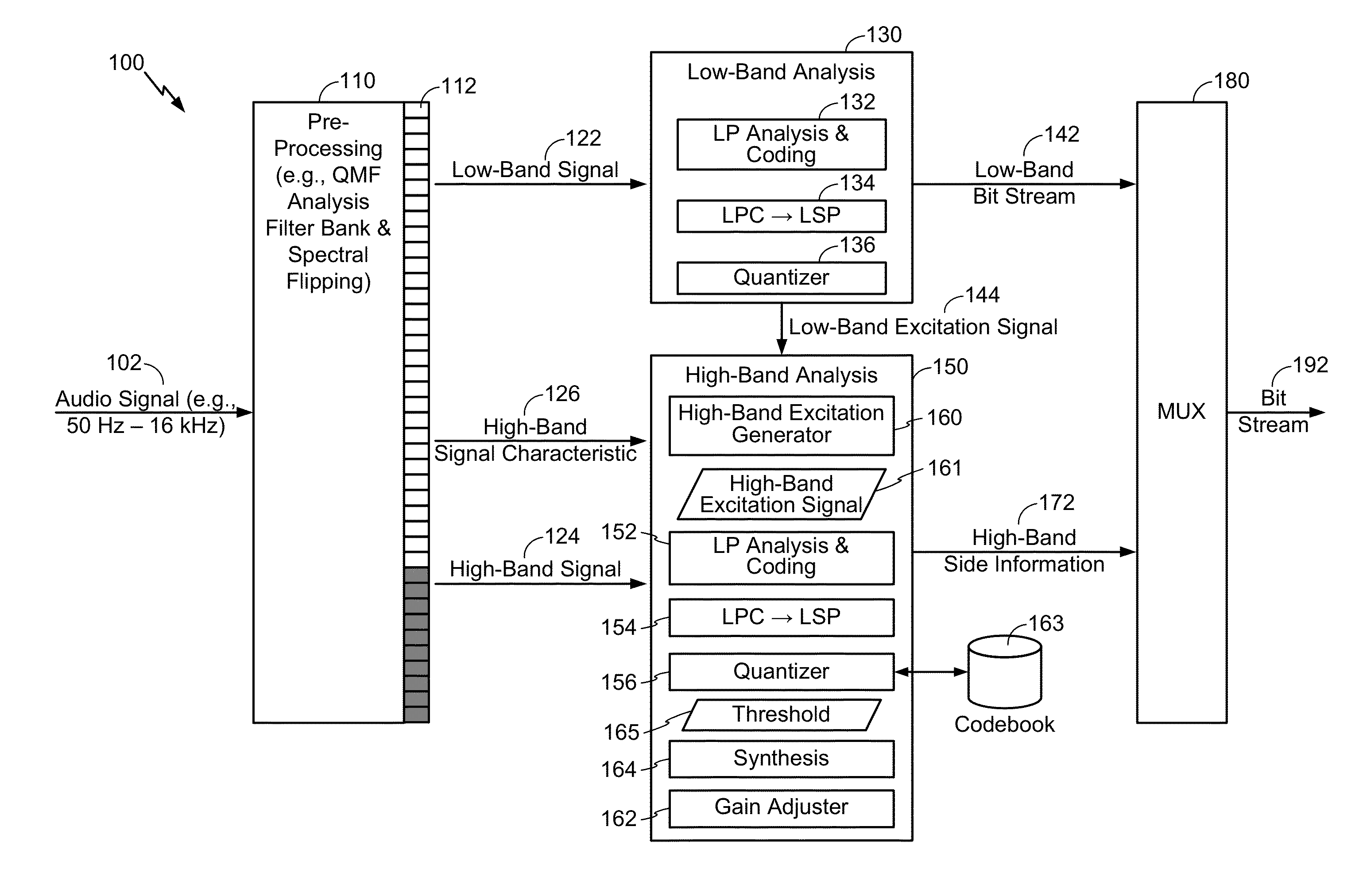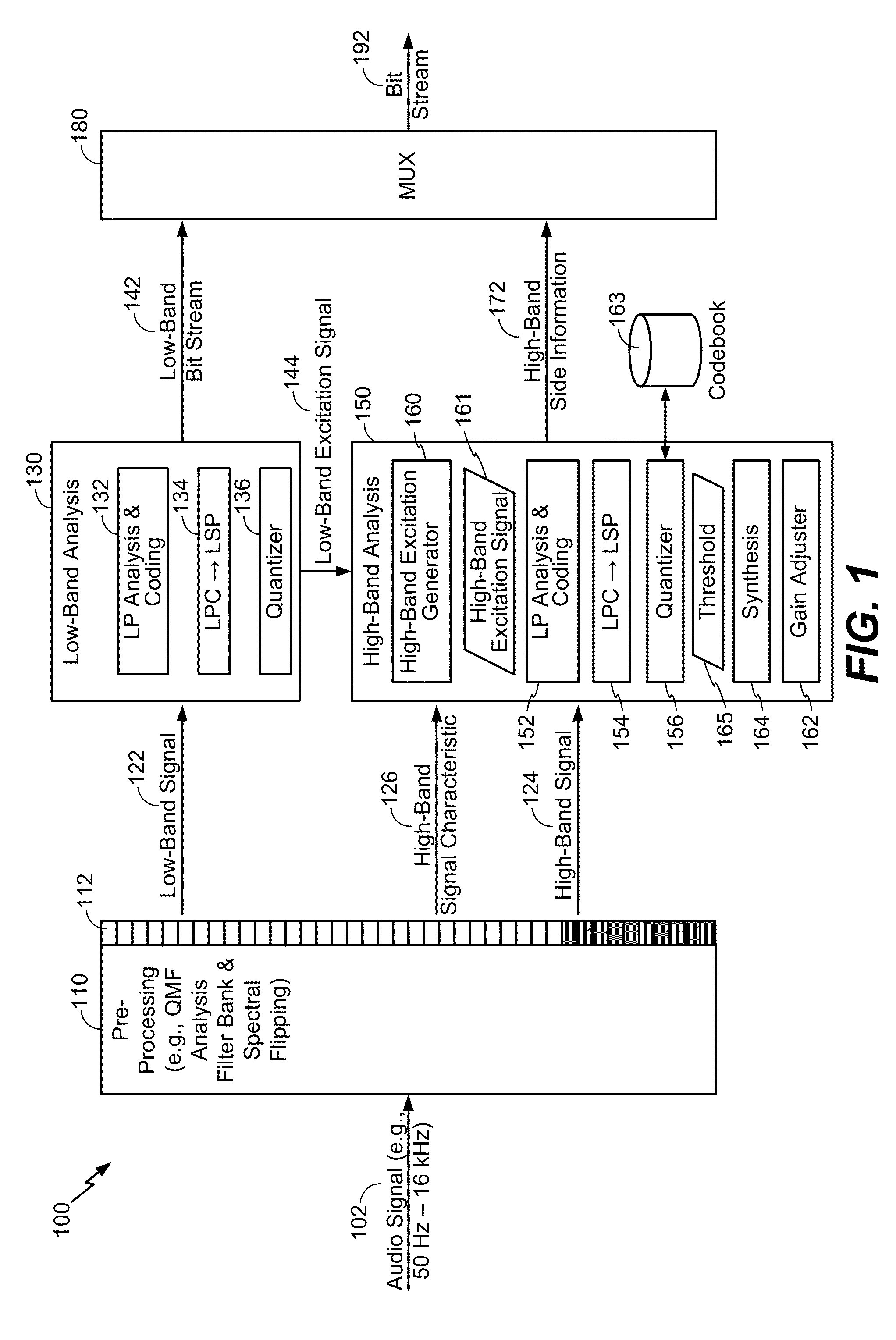Temporal gain adjustment based on high-band signal characteristic
a high-band signal and gain adjustment technology, applied in the field ofsignal processing, can solve the problems of low bit rate operation of celp coding systems operating at low bit rate, introducing perceptually significant distortion, and time-domain coders may fail to retain high quality and robust performan
- Summary
- Abstract
- Description
- Claims
- Application Information
AI Technical Summary
Benefits of technology
Problems solved by technology
Method used
Image
Examples
Embodiment Construction
[0038]Systems and methods of adjusting temporal gain information based on a high-band signal characteristic are disclosed. For example, the temporal gain information may include a gain shape parameter that is generated at an encoder on a per-sub-frame basis. In certain situations, an audio signal input into the encoder may have little or no content in the high-band (e.g., may be “band-limited” with regards to the high-band). For example, a band-limited signal may be generated during audio capture at an electronic device that is compatible with the SWB model, a device that is not capable of capturing data across an entirety of the high-band, etc. To illustrate, a particular wireless telephone may not be capable, or may be programmed to refrain from capturing, data at frequencies higher than 8 kHz, higher 10 kHz, etc. When encoding such band-limited signals, a signal model (e.g., a SWB harmonic model) may introduce audible artifacts due to a large variation in temporal gain.
[0039]To r...
PUM
 Login to View More
Login to View More Abstract
Description
Claims
Application Information
 Login to View More
Login to View More - R&D
- Intellectual Property
- Life Sciences
- Materials
- Tech Scout
- Unparalleled Data Quality
- Higher Quality Content
- 60% Fewer Hallucinations
Browse by: Latest US Patents, China's latest patents, Technical Efficacy Thesaurus, Application Domain, Technology Topic, Popular Technical Reports.
© 2025 PatSnap. All rights reserved.Legal|Privacy policy|Modern Slavery Act Transparency Statement|Sitemap|About US| Contact US: help@patsnap.com



